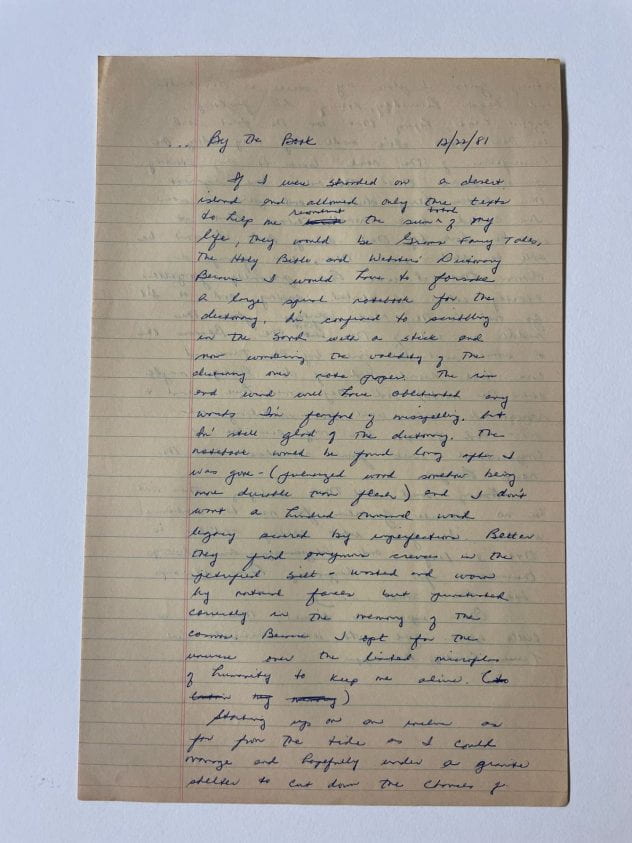Gloria Naylor wrote these three journal entries shortly after finishing The Women of Brewster Place, in the summer before and during her first semester in the Afro-American studies program at Yale University. Her archive includes several journal entries from between 1981 and 1983, when Naylor was working on Linden Hills, and then a second series of journal entries from between 1996 and 2000.
Professor Kashi Johnson animates Naylor’s intimate reflections on the writing process in the recordings featured below.
July 11, 1981
In the summer of 1981, Naylor traveled to Spain, Morocco, France, and Germany, anticipating that “solitude” and a “different atmosphere” would inspire her writing for Linden Hills. But, in this journal entry, written while she was in a hostel in Cadiz, Naylor describes the European atmosphere as uncongenial: “‘Can anything good come out of Europe?’ I thought so—misled by Baldwin & Hemingway & Vidal I really thought so. But I need a community—a reflection of myself & there’s nothing here.” This journal entry underscores the importance of U.S. Black community spaces and neighborhoods to Naylor’s writing process during the early years of her career.

October 24, 1981
While Naylor began the MA program at Yale University in the fall of 1982, she kept a journal reflecting on her academic experiences and her writing process for Linden Hills. In this entry, Naylor considers how she will apply the “concentration and ability [she has] achieved in her creative projects” to literary criticism. Exploring the tension between these two pursuits, Naylor writes that Linden Hills is “calling to be created,” and she resolves to devote her Saturdays exclusively to the novel. Other journal entries explore how Naylor’s experiences of conflict between a predominantly white, elite educational institution and Black culture and community shape her portrayal of Linden Hills.

December 22, 1981
In this entry, Naylor considers the centrality of the South to her own origin story even as she affirms the cosmic reach of her art. She muses that, even if she were “stranded on a desert island,” she would still write, her words “wasted and worn by natural forces but punctuated correctly in the memory of the cosmos.” She ends the entry by returning to her own beginning: “Once upon a time, there was a little black girl who was conceived in Tunica County, Mississippi.” This brief journal entry evokes the geographic trajectories featured in so many of Naylor’s novels: Southern birthplaces, northward migration, and islands with distinctive epistemologies.
